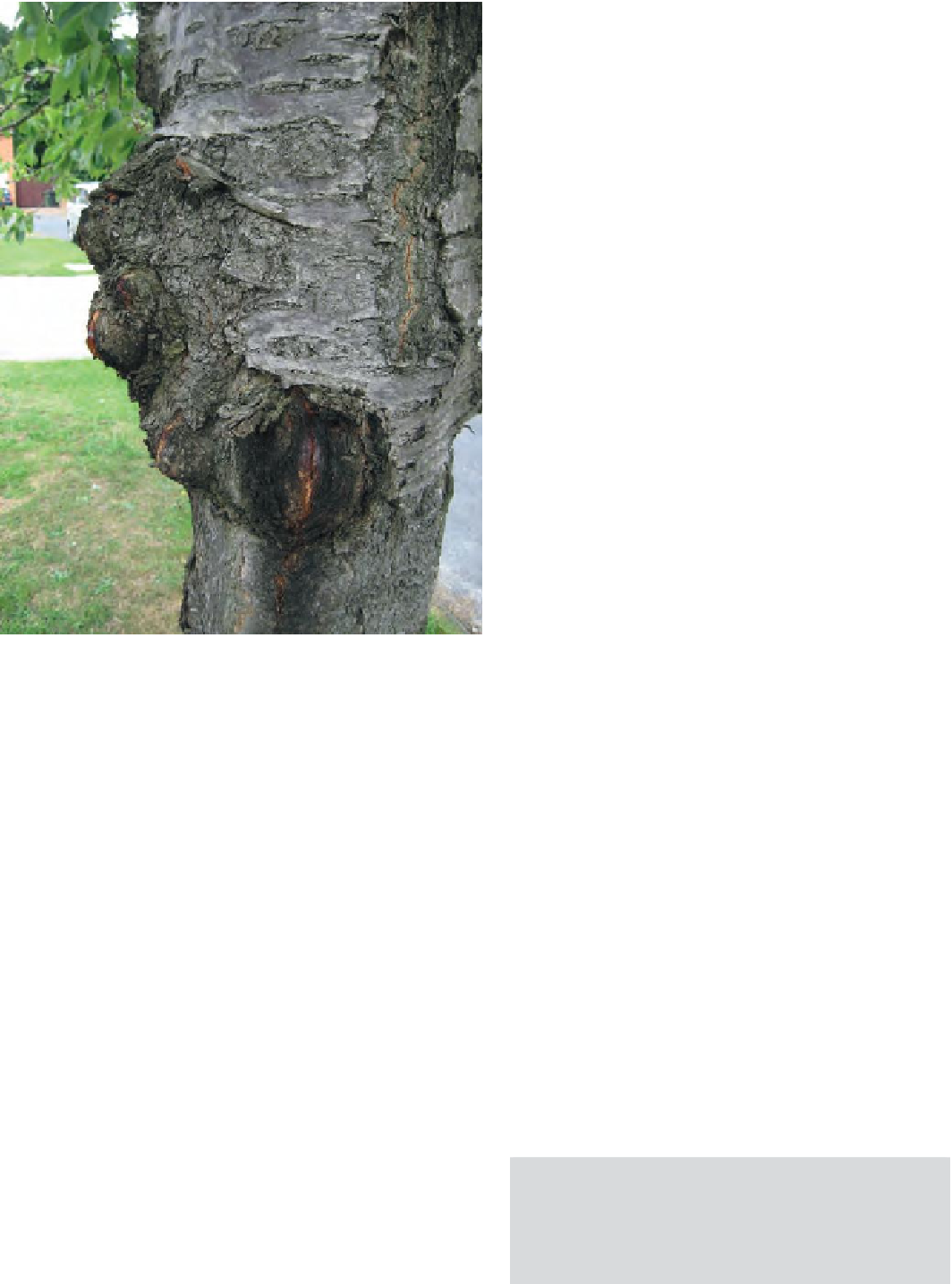Agriculture Reference
In-Depth Information
Soft rot (
Erwinia carotovora
)
This bacterium affects stored potatoes, carrots,
bulbs and corms, where the bacterium's ability to
dissolve the cell walls of the plant results in a mushy
soft rot. High temperatures and humidity caused by
poor ventilation promote infection through lenticels.
A related strain of this bacterium causes blackened
stems (black leg) on potato plants. Spread is mainly
caused by infected planting material. In stores, the
bacterium may be spread by insects or by liquid
oozing from infected plant material. Preventive control
measures are important. Plant material should be
damaged as little as possible when harvesting, and
diseased or damaged specimens should be removed
before storage. Hot, humid conditions should be
avoided in store. No curative measures are available.
Crown gall (
Agrobacterium
tumifasciens
)
This bacterium affects apples, grapes, peaches, roses,
Euonymus
and many herbaceous plants. The disease
is first seen just above ground level as a swollen,
canker-like structure, often about 5 cm in size,
growing out of the stem. It may occasionally cause
serious damage, but usually is not a very important
problem. The bacterium is able to survive well in soils,
and infects the plant through small wounds in the
roots.
Control of crown gall depends on cultural control
methods such as disease-free propagating material,
avoiding wounds at planting time and budding scions
to rootstocks (rather than grafting) to avoid injuries
near the soil level.
This bacterium is of special scientific interest in the
area of plant breeding, having the ability to pass
its genetic information to that of the plant cell. It
does this by means of a small unit of DNA called a
'plasmid'. This plasmid ability of
A. tumifasciens
has
been harnessed by plant breeders to transfer genetic
information between unrelated plant species. Thus,
it is the properties of this bacterium, more than any
other organism, that have led to 'genetically modified'
(GM) crops.
Figure 19.17
Bacterial canker of
Prunus
plum, cherry, peach and apricot. Symptoms typically
appear on the stem as a swollen area which often
shows stem-cracking and exudes a light brown gum
(see Figure 19.17). The angle between branches
is the most common site for the disease. Severe
infections girdling the stems cause death of tissues
above the infection, and the resulting brown foliage
can resemble the damage caused by fireblight. In May
and June, leaves may become infected; dark brown
leaf spots 2 mm across develop and the infected area
may be blown out by heavy winds to give a 'shot-hole'
effect.
Life cycle and spread
. The bacteria present in
the cankers are mainly carried by wind-blown
rain droplets, infecting leaf scars and pruning
wounds in autumn, and young developing leaves in
summer.
Control
. Preventive control involves the use
of resistant rootstocks and scions (e.g. in
plums). The careful cutting out of infected
tissue followed by the application of a suitable
paint and the use of autumn sprays of a copper
compound (Bordeaux mixture) help to reduce this
disease.
Viruses
Structure and biology of viruses
Viruses are extremely small; much smaller
even than bacteria (see Figure 19.2). The light
microscope is unable to focus in on them, but
they can be seen as rods or spheres when seen
under an electron microscope. The virus particle



